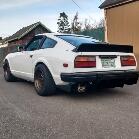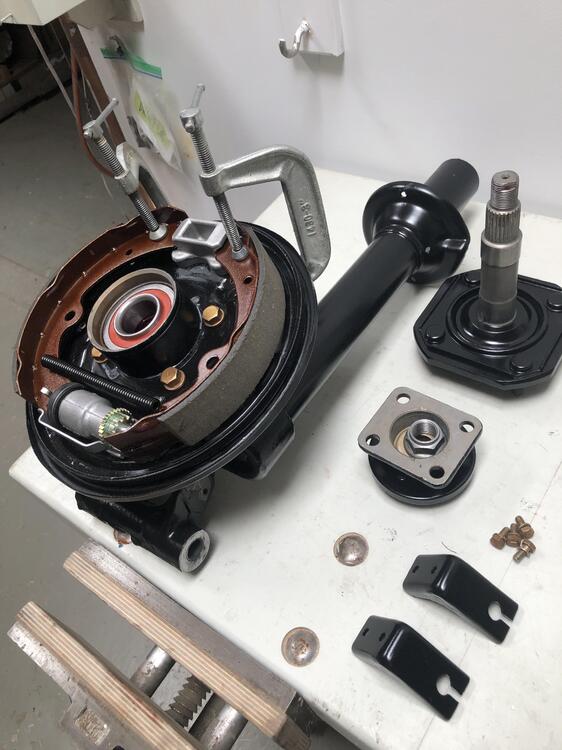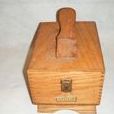Dave, did you post the specs of that engine and the modifications you've made? What turbo is that? Then I'm wondering why in hell you're using an L28E ECU to try to run a turbocharged engine.
It's a good thing you have it in a situation where you're not inducing any load. It will not build boost (the boost you get will be at zero manifold pressure) while not under load. (my L28ET running 5000 RPM in NEUTRAL will not build boost) You need a proper ECU. On a stock L28ET that would mean a 1981 280ZXT ECU with dropping resistors OR 1982-83 280ZXT ECU without dropping resistors OR a tunable standalone ECU.
You're giving more weight (credit) than you should to the O2 sensor. The early ECU does NOT poll the ECU constantly to regulate fuel. Most of the time the ECU completely ignores the O2 sensor and runs off the maps. The ECU tunes cruise AFR under certain limited conditions, in a certain RPM and LOAD range. Even the more sophisticated turbo ECUs of the 80's use basically the same strategy.
Do you know for certain if your FPR will RAISE fuel pressure under boost? You can break pistons in an instant if you're hot and lean and mis-timed under boost. Ignition timing is another aspect that needs to be controlled properly. Your posts above throw up all kinds of red flags to me - but it's your engine...
I have a stock L28ET intake manifold. It's a bit more sophisticated than one might think - even has a built-in "blow off valve" (that's not what Nissan calls it though). Most of us turbo-swap guys don't use them, opting for a custom intake manifold, the cleaner early 280Z non-EGR manifold, or the like. But, as soon as you ditch stock, you need a tunable ECU. You can add a Nistune daughter board to an L28ET ECU, use Megasquirt, or AEM, or... but you need the ability to tune the maps.
Man... There are SO many things here... Turbo lag. I did my turbo swap in 2008 - running stock in early 2009. I've used 3 different ECUs and about to go to a fourth. Stock turbo, Chinese T04E (which I've run for 8 years or more). Stock J Pipe, custom charge pipe, custom charge pipe with same-side intercooler. I've run AFM, MAF, and none of the above with MS3X. I'VE NEVER HAD TURBO LAG - not because I'm a genius - because I have a properly sized turbo and reasonably well thought out charge and intake air piping. I have a turbo that starts to build boost around 2500 RPM, comes on smoothly, and really lets you know it's there when it hits 8 or 9 pounds and beyond. Turbo lag...
Edit:
OH, and get a WIDEBAND!!












.thumb.jpg.4f54021f7cd56e62dbb0a919d36f2306.jpg)
